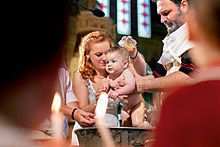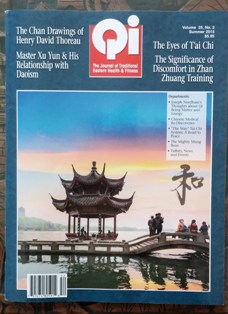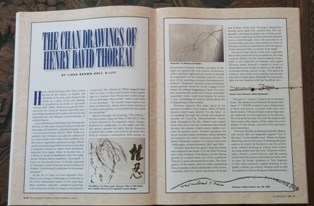For information about this Website, please click on the "About Me" tab at the top of the Navigation menu to the right.
Review of "The Wisdom of the Beguines" by Laura Swan
Review from Goodreads.com :
A good overview of the Beguines, who were women who heeded a spiritual calling but did not become nuns from roughly the 12th to 18th centuries in Europe. Beguines lived in communities ("Cities of Ladies"), supported themselves through crafts such as lace-making and professions such as teaching. They took no vows, but lived lives of simplicity and regular spiritual practices such as study of scripture, helping the poor, prayer, and fasting.
Swan's book is a bit dry and could benefit from some maps and photographs of beguinages, but it is well researched and clearly written. Scholars would like a few more citations throughout, but there is a good selection of sources for the reader's further inquiry. This book is worth having if for nothing more than the engaging portrait of a noble woman (not a Beguine, but from that era) on the cover. Roger van der Weyden's Portrait of a Woman in a White Headdress is hypnotic, intriguing, and more captivating even than the Mona Lisa. Look into those eyes and heed that smile if you would know women's experience of religion and life itself in the Middle Ages and Renaissance.
The Wisdom of the Beguines: The Forgotten Story of a Medieval Women's Movement by Laura Swan. BlueBridge, Katonah, New York. 2014
Welcome the little children...
It was too warm to play outside today, so I went to church, something I rarely do in the summer. I thought there would be about five or six other people there, but when I opened the door, I fell back in surprise: almost every seat was taken. Then I noticed the babies.
My worst church-going nightmare is arriving for a service and finding out there is a baptism. The only thing worse is finding out that there is a guest appearance by a brass quintet. Grabbing one of the last available seats, I quickly looked at the program for signs of baptism. Yes, there was a baptism. In fact, there were FIVE! My heart sank, but I was stuck now: there was no escape!
Actually, the service moved along rather briskly, and there was enough air conditioning to make it tolerable. The babies were cute, of course, and our rector has a sincere love of little ones, you can tell by the way he tenderly cuddles them and gives them a kiss at the end. But FIVE? Any way, the sacrament also provided a lesson in the new names of today’s children:
Emma, April, Allegra, Francesca, and Lorenzo. The rector and parents carried the new baptisees down the aisle for all to admire, and actually, my curmudgeonly self melted away in their beguiling presence.
Add to this, the last hymn before dismissal was the Hymn to Joy based on the theme from Beethoven’s Ninth. I believe the Episcopalians are the only denomination that includes the syncopation at the return to the A section (it sounds awfully humdrum without it). The congregation sang robustly, and the choir director pulled out all the stops with the newly restored organ. All in all, I suppose there are worse ways to spend a warm Sunday morning.
(clip art courtesy of Google, not the service described above.) 
Music and spirituality
Just discovered a joyful, interfaith musical experience: Yuval Ron Ensemble, based in California. http://www.yuvalronmusic.com/workshops/ This group embodies the spirit of the Golden Age of Spain shortly before the disastrous intolerenace of the late 15th century. Jewish, Islamic, and Christian music, sung and played from the heart in an improvisational style, speak to the ecstasy of communion not only with God, but with each other, as peoples sharing an irreplaceable planet and love for each other. Shades of Flamenco and Klezmer at its finest!
"Chan Drawings of Thoreau" in Qi Journal, Summer 2015
My paper, "The Chan Drawings of Henry David Thoreau," is appearing in the Summer edition of Qi Journal, Vol. 25 No. 2. The new issue isn't online yet, but should be soon at www.qi-journal.com .The article spans seven pages and describes how Thoreau's intimate communion with nature resulted in drawings similar to those created by Chinese Buddhist contemplatives. Qi Journal is available at some Barnes & Noble stores and other booksellers.


Music as a metaphor for the spiritual
J. W. N. Sullivan wrote a small but profound book about the relationship between spirituality and music. Beethoven: His Spiritual Development was so important to me as an adolescent that I had two copies, one for home reading, one for on the go. Recently, I tried to reread this wonderful essay, which is available for free at https://archive.org/ , but found I had moved on to a different place, though I wasn’t quite sure what that place was. This past week I discovered it in Beethoven’s 32 piano sonatas.
A Beethoven acolyte since the age of 11 or 12, I was certainly familiar with these works, which make up the canon of Western classical piano music, and then some. The plays of Shakespeare, the piano sonatas of Beethoven: you don’t really need much more. However, attending a complete performance of the cycle over the course of seven evenings this past week, I encountered more than Beethoven. I came face to face with the spiritual struggle and awakening that accompanies each human on the journey from birth to the grave.
The accomplished pianist Stephan Möller, in his commentary after intermission during the last concert, put it so well. Beethoven’s sonatas, especially his last sonatas, and even more especially his very last sonata, move us (in my paraphrase) from a place of profound stillness to life itself and then back to the silence from which it came. There is nothing more to say. It is perfect.
Music is magic. But it also is a spiritual pathway. It can, but doesn’t have to, have anything to do with religion. It is a metaphor for life. But more, as Möller pointed out, it is life itself.
(The complete Beethoven piano sonata cycle was presented by the Downtown Concert Series of Freehold, N.J., in St. Peter’s Episcopal Church, in May 2015. A two-part review appears at my classical music blog, http://classicalrave.blogspot.com/ )
